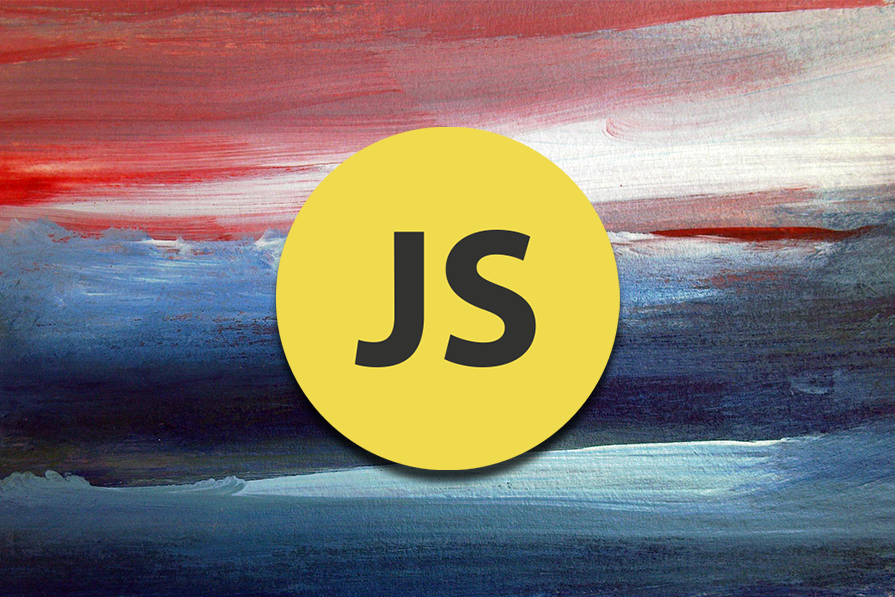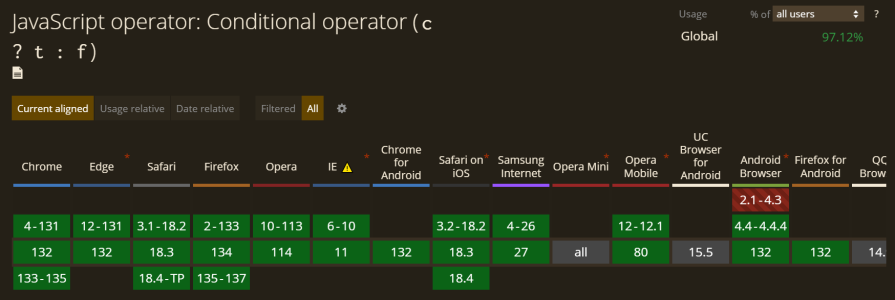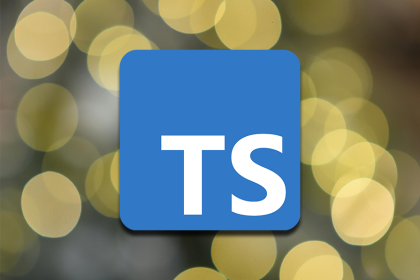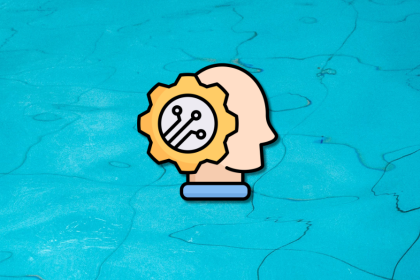
You know how people say, “Programming is basically just a bunch of if...else decisions”? I couldn’t agree more!

Think about it: almost everything in our code comes down to “if this happens, do that; if not, do something else.” It’s the programming DNA. And if you’re just starting your JavaScript journey, I’m excited to show you a really cool trick that’ll make your if...else statements cleaner with the JavaScript ternary operator.
A few prerequisites before we get into it:
if…else conditional statements=== (strict equality) !== (strict inequality) > (greater than) < (less than) >= (greater than or equal) <= (less than or equal)
The goal of this article is to add to your JavaScript knowledge of shortcuts by mastering the ternary operator. We will cover everything from the syntax to real-world examples, so you can write cleaner code that your fellow developers will love.
The Replay is a weekly newsletter for dev and engineering leaders.
Delivered once a week, it's your curated guide to the most important conversations around frontend dev, emerging AI tools, and the state of modern software.
One of the most repeated principles in programming is the DRY principle: “Don’t Repeat Yourself.”
It’s pretty self-explanatory; do not be redundant. If there’s a straightforward way that keeps your code maintainable and readable, use it. That’s exactly why the ternary operator in JavaScript was created: as a shorthand for the if...else statement.
The JavaScript ternary operator shorthand allows us to write conditional statements in a single line, using three parts (hence the name “ternary”). It is the only JavaScript operator that takes three operands.
Below is the syntax:
condition ? doThisIfTrue: doThisIfFalse
Let’s carefully walk through the syntax above, for a better understanding.
conditionThe syntax starts with a condition. This is where any expression that evaluates to true or false comes in. For example:
age >= 18 username === "admin" isLoggedIn && hasPermission
? – The question markNext, we have the question mark, ?. Think of it as asking a question like, “Then what?”. This question mark separates your condition from your outcomes, and should always come after your condition.
doThisIfTrueThis code runs only when our condition is true. This can either be a value, an expression, or a function call:
"You're an adult" calculateBonus()
: – OtherwiseThis comes right after the true outcome, and just before the false outcome of your condition. It essentially means, “Otherwise, do this instead”.
doThisIfFalseThis code runs if your condition is false. Just like true, it can take a value, an expression, or a function call.
Now we know the syntax, let’s play around with some examples.
Let’s walk through practical examples and best practices for writing clean, maintainable code using the ternary operator.
We’ll write a basic code check for website access. Let’s say, for example, we do not want kids below 14 to have access to our social media application.
Using the traditional if...else statement, our logic should look like this:
let age = 17;
let message;
if (age >= 14) {
message = "Welcome to the site!";
} else {
message = "Sorry, you must be 14 or older";
}
// Output: "Welcome to the site!"
In our code above, our user is said to be 17 years old. We create a message variable that will store whatever message is appropriate for their age. Our if...else statements dictate that if the user’s age is greater or equal to 14 years, they should be welcomed to the site. Otherwise, they should see a friendly message asking them to return when they’re older.
When we console.log() the message, our output is Welcome to the site!, because our user is over 14. But using the ternary operator, it looks like this:
let age = 17; let message = age >= 14 ? "Welcome to the site!" : "Sorry, you must be 14 or older"; console.log(message); // Output: "Welcome to the site!"
Just like that, we have turned six lines of code into two:
age >= 14 – Our condition? – Asks, “What happens if the user is greater or equal to 14 years?”"Welcome to the site!" – What we show if they’re 14 or older: – Says that if the user isn’t 14, show them the friendly message, "Sorry,you must be 14 or older"Same result, but way cleaner. Let’s test a different age:
age = 13;
if (age >= 14) {
message = "Welcome to the site!";
} else {
message = "Sorry, you must be 14 or older go read your books";
}
The ternary operator looks like this:
age = 13; message = age >= 14 ? "Welcome to the site!" : "Sorry, you must be 14 or older go read your books";
What will our output be? Because our user is less than 14, they must get the friendly message that reads, Sorry, must be 14 or older go read your books.
When you’re working with ternary operators, there are many values that JavaScript sees as ‘false-like’. These are called falsy values. While the boolean false is the most obvious one, there are several other subtle values that will also trigger the second part of your ternary:
// Let's see what happens with each of these tricky values:
let userInput = null;
let message = userInput ? "Got your input!" : "No input received...";
// You'll see: "No input received..."
let cartTotal = 0;
let checkoutStatus = cartTotal ? "Ready to pay!" : "Your cart is empty";
// You'll see: "Your cart is empty"
let userName = "";
let greeting = userName ? `Hi ${userName}!` : "Hi stranger!";
// You'll see: "Hi stranger!"
// A practical example you might use:
const getUserDisplay = (user) => {
return user?.name ? user.name : "Anonymous User";
};
Whenever your condition is null, NaN, 0, an empty string (""), or undefined, JavaScript will run the code after the:, instead of what’s after the ?.
It’s like these values are automatic red flags that tell JavaScript, “Nope, let us focus on Plan B!”. This comes in handy in a real-world scenario when you’re handling user input or checking if data exists.
Let me introduce something called an if...else – if...else statement. This statement checks multiple conditions and executes different code blocks based on which condition is true.
In cases where you may want to write an if...else – if...else statement, you could easily pull this off with a ternary operator.
Let’s consider a new example. We have a standard ticket price of $20, but we believe in making our events accessible to everyone. Senior citizens 65 and above receive a 50% discount, bringing their ticket price down to $10.
Adults between 18 and 64 pay the regular price of $20, while young people under 18 can enjoy a special youth rate of $12. Let’s go ahead to write the logic:
// Traditional way
let age = 65;
let ticketPrice;
if (age >= 65) {
ticketPrice = "Senior discount: $10";
} else if (age >= 18) {
ticketPrice = "Full price: $20";
} else {
ticketPrice = "Student discount: $12";
}
// Output: "Senior discount: $10"
In our code, we assume the user is a senior citizen, so they get the discount. Using the ternary operator, we have:
// Nested ternary way (use carefully!)
let age = 65;
let ticketPrice = age >= 65 ? "Senior discount: $10"
: age >= 18 ? "Full price: $20"
: "Student discount: $12";
// Output: "Senior discount: $10"
This example works well. However, when nested operators get too complicated, they counteract the purpose of a ternary operator, which is to make your code more readable. When things get bulky, they become a bit hard to read – which we’ll see in the next section.
When using the ternary operator in a single line, the code is not only straightforward; it’s also simpler to read. The question mark is like asking a question about the condition. Let’s take for example the code below:
speed > 70 ? "You get a ticket" : "You're good to go";
This is followed by a question mark, saying, is speed greater than 70?. If true, you get a ticket; if false you don’t.
In cases with a nested condition, the code reads better using the ternary. For example, consider the age ticket logic above. Once we are done with the initial statement (whether someone qualifies for a senior discount), we just use a colon:instead of “else if.”
This basically means “otherwise, check this.” It flows more naturally, like asking a series of questions:
if (age >= 65) {
ticketPrice = "Senior discount: $10";
}
Ternaries do have their limits. When you start nesting multiple conditions inside each other, they can turn into a tangled mess that’ll make your head spin trying to read it.
Let’s say we want to add a membership status and weekend pricing to our ticket system, using the traditional if...else:
// Traditional `if...else`:
if (age >= 65) {
if (isMember) {
if (isWeekend) {
ticketPrice = "Senior member weekend: $12";
} else {
ticketPrice = "Senior member: $8";
}
} else {
if (isWeekend) {
ticketPrice = "Senior weekend: $15";
} else {
ticketPrice = "Senior regular: $10";
}
}
} else {
ticketPrice = "Regular price: $20";
}
// Now the ternary version - watch as this gets wild!
let ticketPrice = age >= 65
? isMember
? isWeekend
? "Senior member weekend: $12"
: "Senior member: $8"
: isWeekend
? "Senior weekend: $15"
: "Senior regular: $10"
: "Regular price: $20";
In the code above, we’re checking three things: age, membership, and whether or not it’s the weekend.
In the if...else version, you can follow the logic by reading each block. But the ternary version resembles a pyramid of question marks and colons. Yes, it has fewer characters, but to what benefit?
In cases like this, you might not want to use the ternary operator, as it inhibits readability.
Ternary operators are actually very common in React components because they work and look great with JSX. Let’s go through some examples of conditional renderings in React.
The code below shows a traditional if...else approach, where we check if a user is logged in and return different welcome messages accordingly:
function UserGreeting({ isLoggedIn, username }) {
if (isLoggedIn) {
return <h1>Welcome back, {username}!</h1>;
} else {
return <h1>Please log in</h1>;
}
}
Instead of this, we can write:
function UserGreeting({ isLoggedIn, username }) {
return (
<h1>
{isLoggedIn ? `Welcome back, ${username}!` : "Please log in"}
</h1>
);
}
In the code above we achieved exactly the same result by using the ternary operator. It’s even slicker at handling conditional styles or classes. This right here is very common:
function Button({ isActive }) {
return (
<button
className={isActive ? "bg-blue-500" : "bg-gray-300"}
>
{isActive ? "Active" : "Inactive"}
</button>
);
}
The React button component above takes a single prop isActive and uses ternary operators to toggle both its background color (between blue and gray) and its text content (between "Active" and "Inactive") based on whether isActive is true or false.
We can handle a loading state too:
function DataDisplay({ isLoading, data }) {
return (
<div>
{isLoading
? <span>Loading...</span>
: <div>{data.map(item => <p>{item}</p>)}</div>
}
</div>
);
}
if...else and ternary operatorsDuring this article, we have seen the advantages and pitfalls of both the traditional if...else statement and the ternary operator. Let’s compare them directly:
if…else Statements |
Ternary Operators | |
| Readability | Simple and clear to read and understand | Can become unreadable when multiply-nested |
| Code Length | Takes up more lines of code | Clean, one-line code |
| Best Use Case | Suitable for complex logic with multiple conditions | Ideal for simple conditional assignments |
| Execution Scope | Great for executing multiple lines of code | Works well for inline JSX in React |
| Skill Level Required | Familiar to all levels of developers | Can confuse newbies in JavaScript |
| Potential Downsides | Looks verbose for very simple conditions; sometimes feels like overkill for simple checks | Easy to abuse with complex conditions |
| Overall Practicality | Preferred for clarity and structured logic | Best for concise, straightforward conditions |
The ternary operator should be compatible with all browsers below. This chart comes courtesy of Can I Use:

In this article, we walked through the best practices of using the ternary operator in JavaScript, its advantages, and its pitfalls. I will leave you a little advice of mine; if you have to think twice about whether a ternary is readable, it’s probably time to use an if…else statement instead. Keep it simple, and keep coding!

Learn how Vitest 4 makes migrating from Jest painless, with codemods, faster tests, native ESM, browser testing, and a better DX.

Learn when to use TypeScript types vs. interfaces, with practical guidance on React props, advanced mapped and template literal types, performance tradeoffs, and common pitfalls.

A hands-on comparison of five AI coding CLIs, tested by building the same React Todo app.

Discover what’s new in The Replay, LogRocket’s newsletter for dev and engineering leaders, in the December 17th issue.
Hey there, want to help make our blog better?
Join LogRocket’s Content Advisory Board. You’ll help inform the type of content we create and get access to exclusive meetups, social accreditation, and swag.
Sign up now